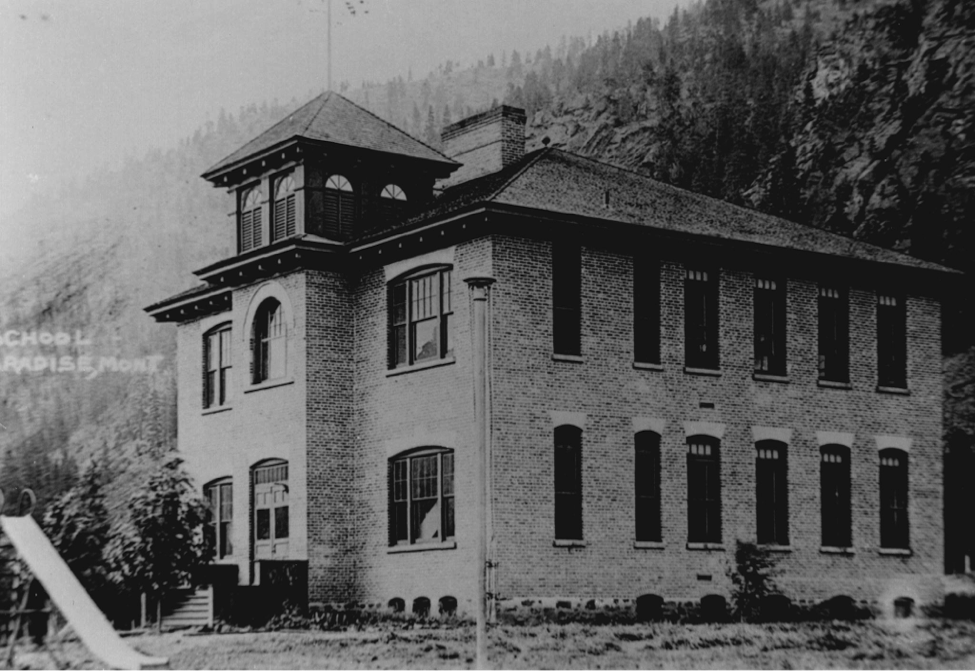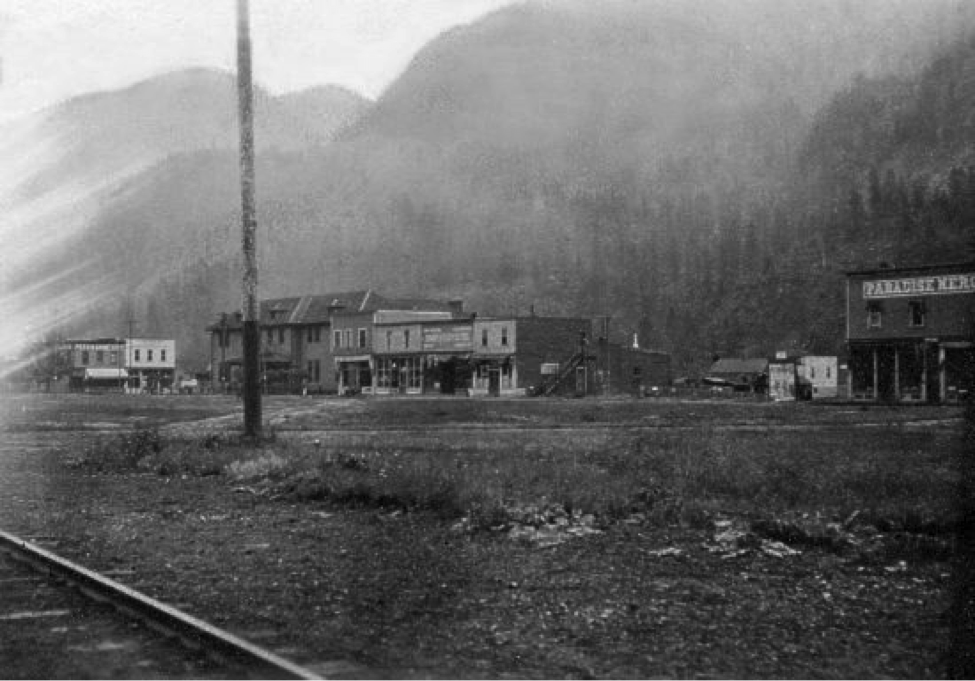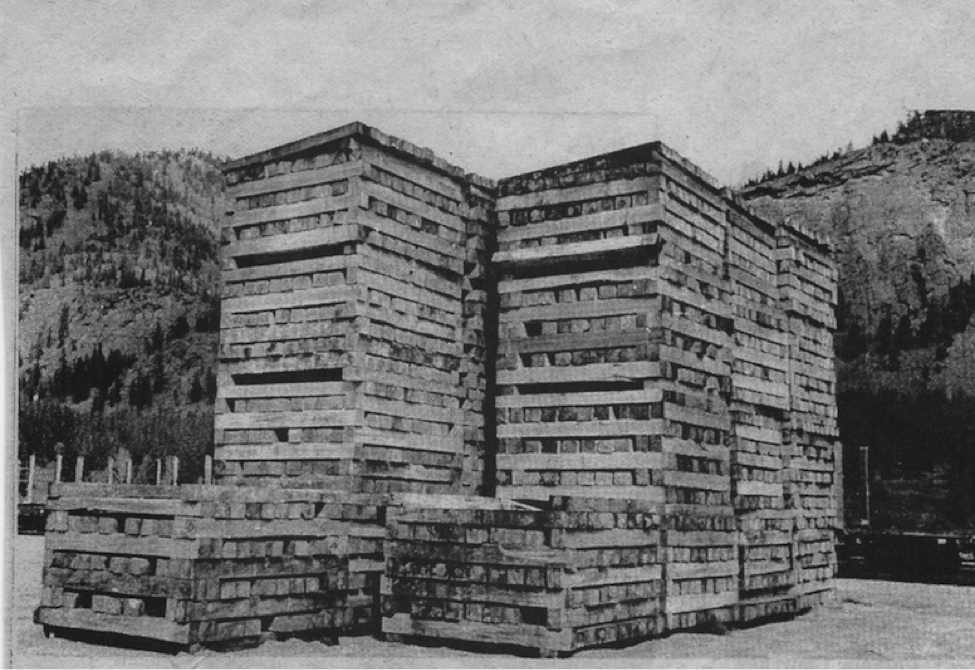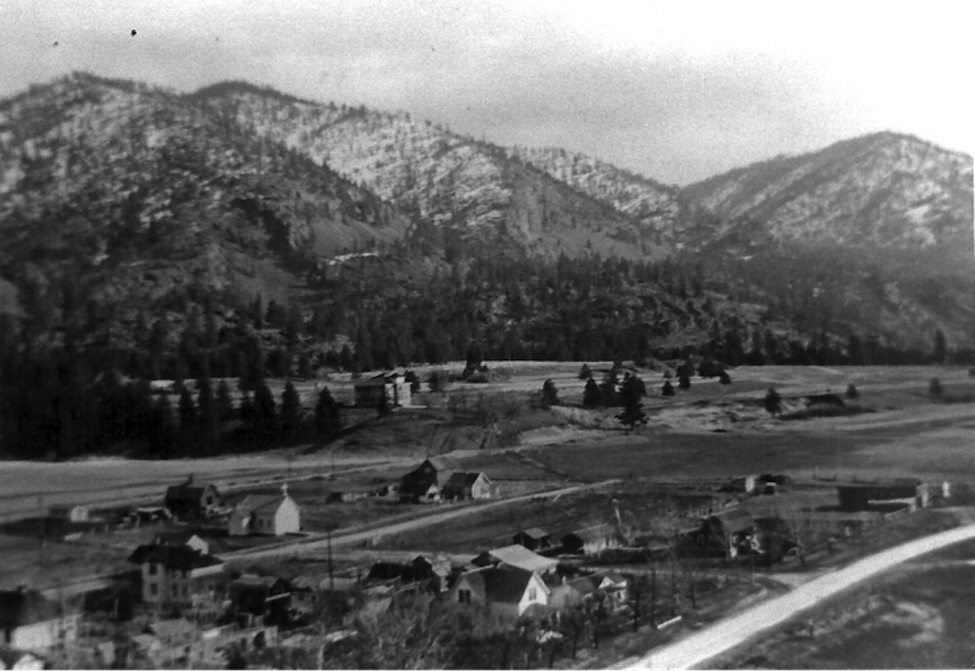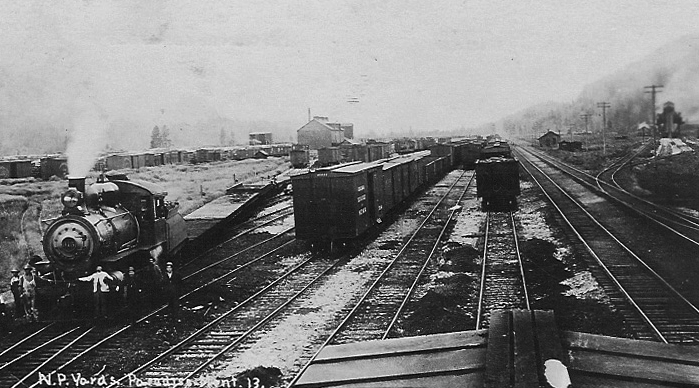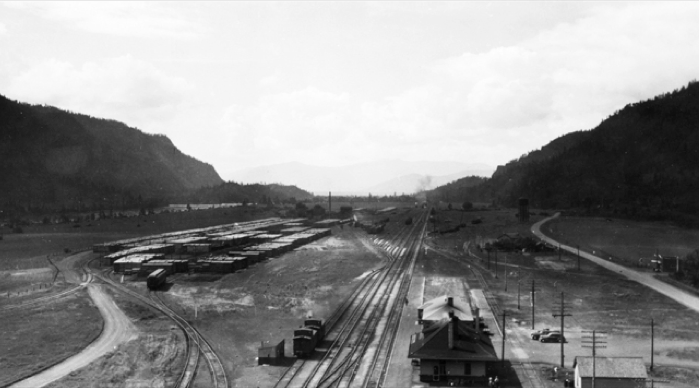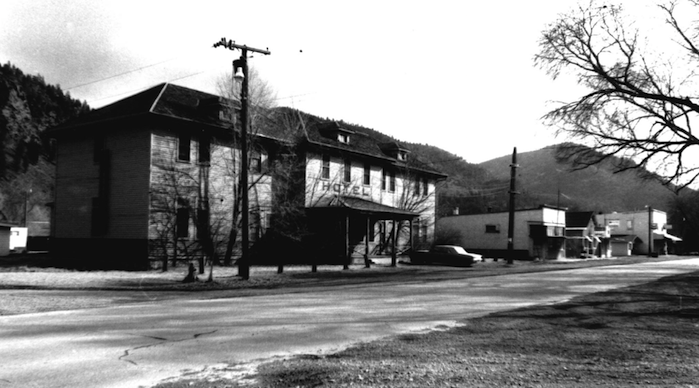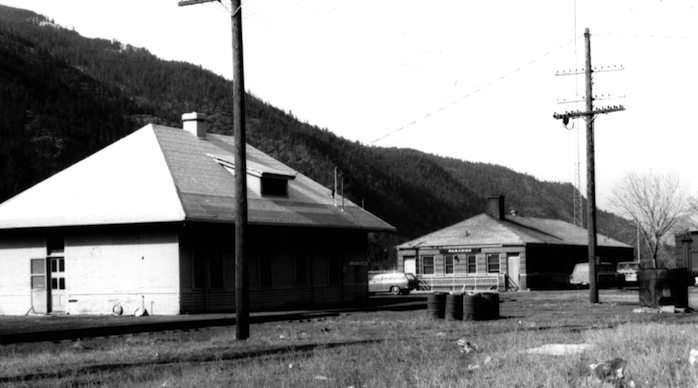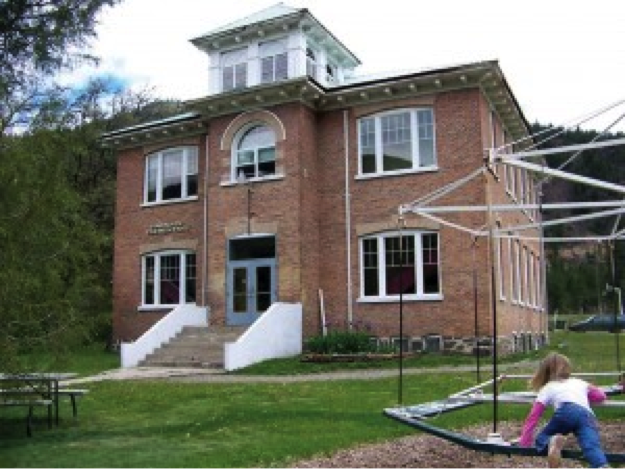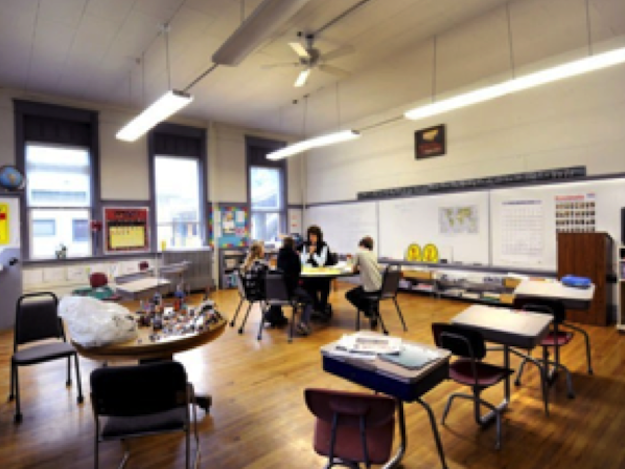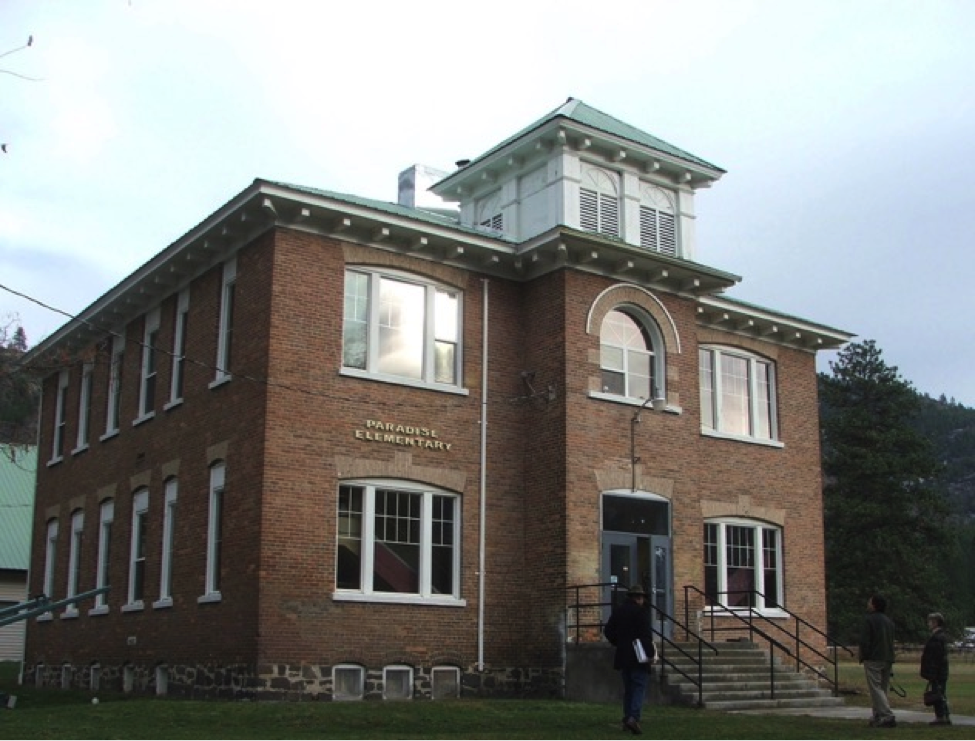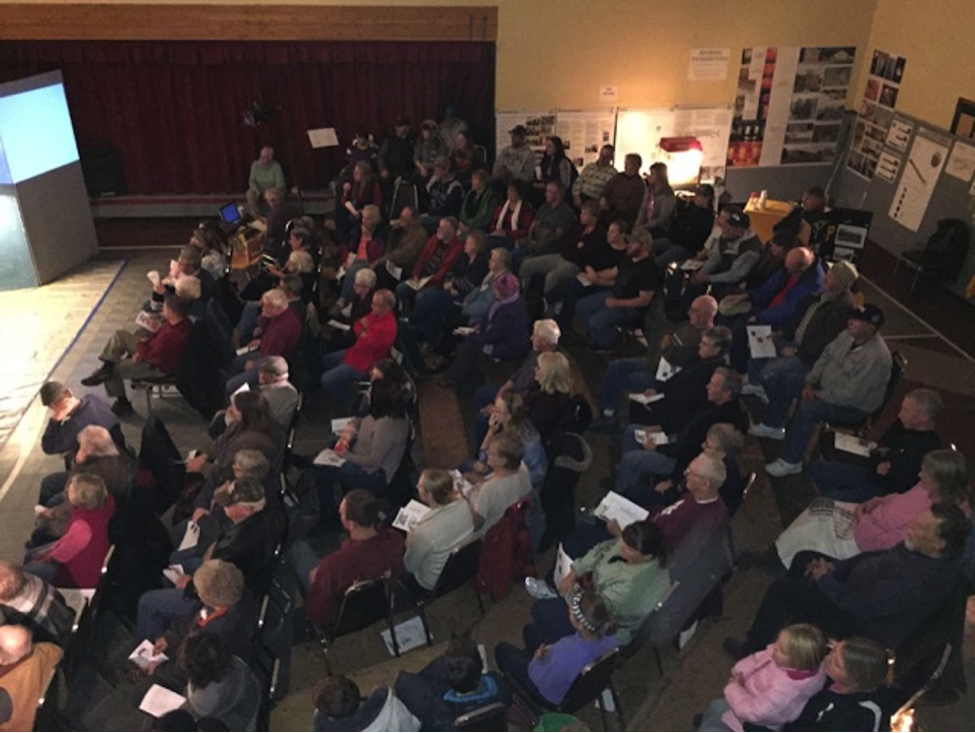
History
The Paradise Elementary School was built in 1910 on land provided by the Northern Pacific Railroad, which had chosen Paradise as the site for several operations on their northern line.
For a few years, the school housed K – 12, but soon transitioned to an elementary school. After numerous changes in railroad operations and a fire in the 1980s, the railroad moved their major operations elsewhere. With the main source of economy gone, Paradise changed and the school changed with it. By 2013, there were only 5 students and the Trustees acknowledged that continuing to operate the school was not financially feasible. A group of concerned citizens then began work on a new life for the school – the Paradise Center.
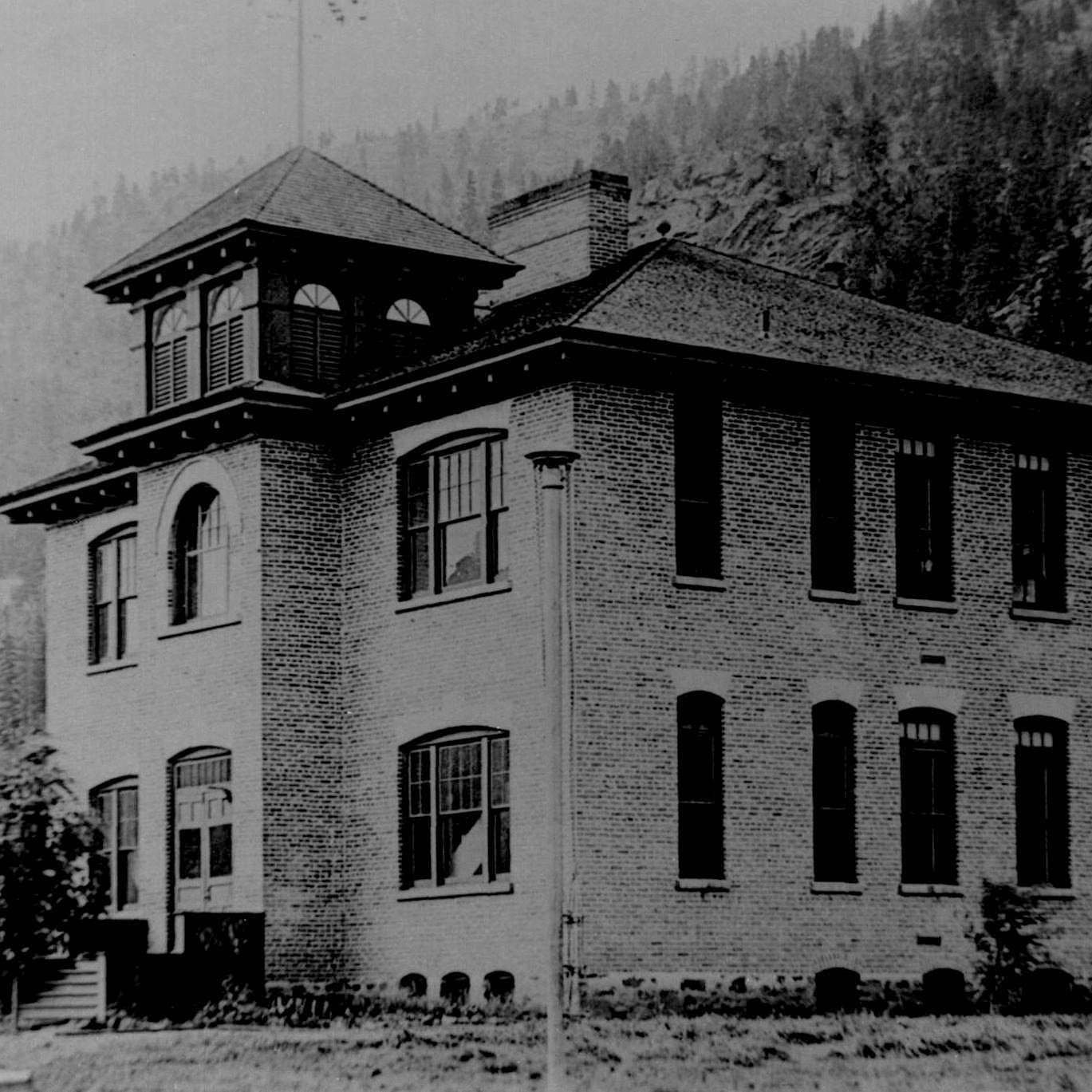
The Early Years
The Paradise School was built in 1910 on land donated by the Northern Pacific Railroad. At one time, it served all grades, but it was primarily an elementary school. Several generations of some families attended the school and some alumni returned to the school as teachers. LEARN MORE…
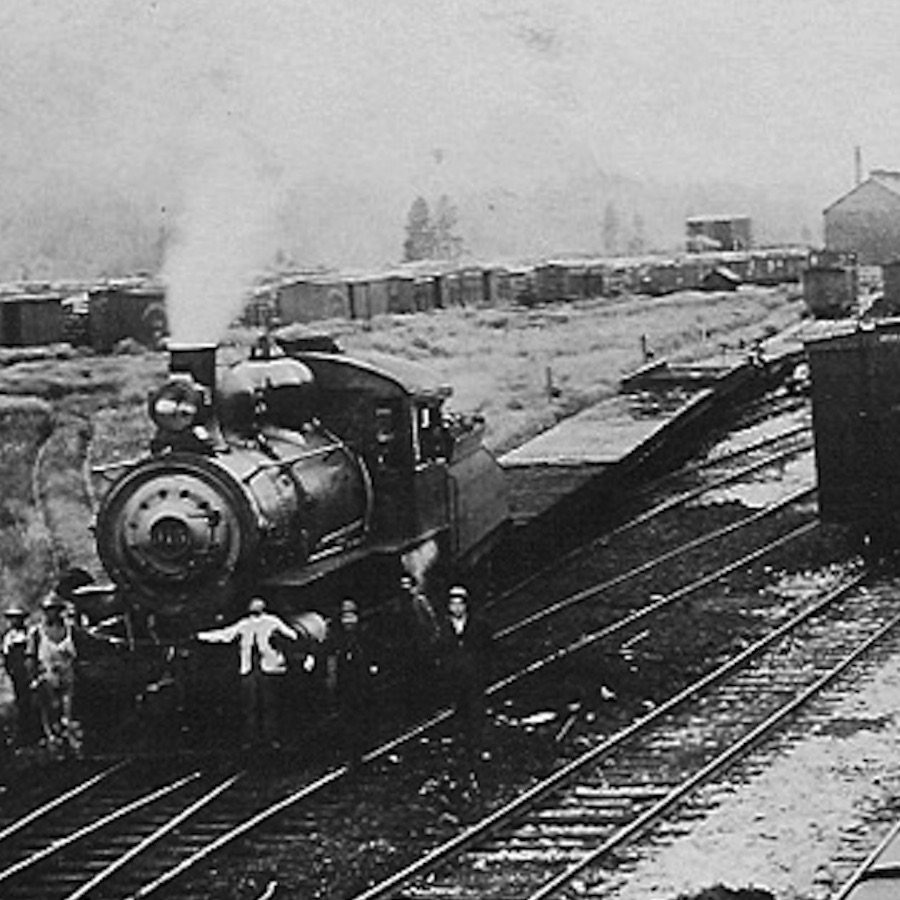
Changes
The railroad was the economic mainstay for Paradise residents for decades and it sustained the school. But as transportation changed, so did the town and the school. Railroads merged, operations moved, and jobs became scarce. The population diminished, and the student body became smaller and smaller. LEARN MORE…
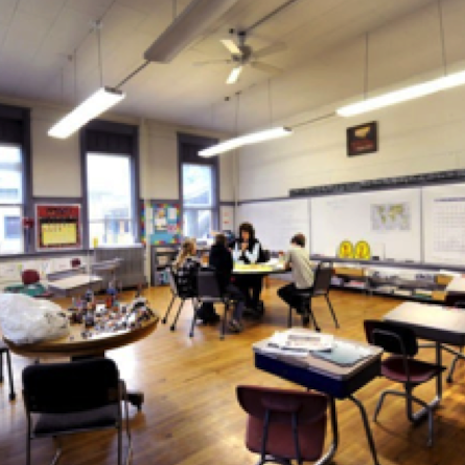
Closing
For several years, Paradise School Trustees worried that maintaining the five-classroom school was becoming less and less feasible. But, townspeople continued to support the school with their efforts and their money. In 2013, however, the student body was only five students, and the Trustees made the difficult decision to close it. LEARN MORE…
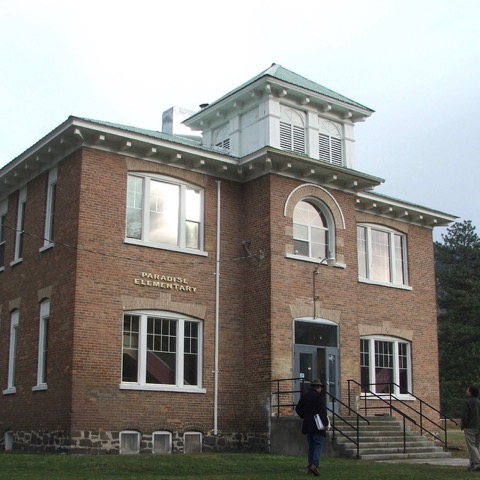
Preservation
When the school closed, and the nearby Plains School District indicated that they did not want to inherit the old school, county residents became concerned about the fate of the historic site. After a few years of planning and fundraising, Sanders County Commission accepted the deed for the school from the Trustees and the Paradise Elementary School Preservation Committee became responsible for the operation of The Paradise Center. LEARN MORE…
The Early Years
In the early days, there was no town, just a beautiful wide valley. To the southeast, where two rivers come together, an old trading post served the sparsely populated area. To the northwest bedrock cliffs disappeared into the river in the Cone Cliff area almost sealing off access from that direction. However, there were hardy homesteaders who had ‘proved up’ their land and had built homes and raised crops that flourished in the mild climate. As railroads opened the West to travel, the Northern Pacific established an operations center in what became Paradise. The company platted the town, gave land for building the 1910 Paradise School, installed one of the two railroad tie treatment plants on their northern line, and created a 20-stall roundhouse to service their engines. Life promised to be prosperous for those in the area who worked hard.
In many ways, westward settlement is thought to be “how the west was won.” However, the spine of the Rocky Mountains presented many barriers for settlement. The rivers of the Pacific Northwest proved to be the easiest routes to travel. Alexander Ross published his book ADVENTURES OF THE FIRST SETTLERS ON THE COLUMBIA RIVER in 1849, less than 50 years after McMillan, the factor of the David Thompson affiliated trading post at the confluence of today’s Flathead and Clark Fork Rivers, successfully celebrated the first Christmas in Montana in 1811.
The confluence of the Flathead and Clark Fork Rivers was important to the two Salish chiefs, Victor and Charlo, who David Thompson called Chief (Cartier) and the Orator in his journals. The Salish chose that place for their winter camp, drying salmon and making pemmican to sustain them through the winter in the valley considered even then to be a “banana belt.”
Then the western expansion of the Northern Pacific Railroad found need to establish a division point here. In 1910 they constructed the Tie Treating Plant, depot, hotel and lunchroom. They platted the town and build cottages for the workers and larger two story homes for the ‘executives’ in the newly named town of Paradise.
The two-story brick Paradise School was built on a rise behind the town to replace the old one room school in the valley. It was an elementary and high school that served about 100 pupils in the early years. But, over the years, the student population fluctuated. One of the first big changes was when the students of high school age were bussed to neighboring Plains School District #1. This was in the mid 1920s. A Paradise School picture in 1929 portrays 65 students in grades 1 – 8.
Routines for the town population of about 300 were easily determined by the sounds of the noon siren at the Tie Plant, the trail of dust on the tie plant road at 7am and 3 pm when workers went to and from work, and by the train whistle of the steam engine passenger trains as the came to town four times a day.
Paradise, as the division point for the railroad, was the place on the line where time changed from Mountain to Pacific time zones, so the people of the town ran on ‘town time’ and railroad time’. There was never need for town kids to tell time…they learned to get to school when they heard the ‘first bell’ (8:20) and to come home from play or in time to eat when ‘the train whistle blew.’
In addition to the many railroad buildings, Paradise boasted a drug store, general merchandise store two grocery stores, movie theater, pool hall and card room, restaurant, two hotels, many small rooming houses, two ferries, two churches, and two bars. Although never incorporated the town was a ‘company town’ in the sense that each home or business deed states that no liquor could be served and no ‘houses of ill repute’ could operate within the platted town. Hence, the historic “Green Shingle” (Miller’s Bar) was situated just outside the “city limits.”
Paradise locals were fairly independent and self-sustaining only occasionally feeling the need to travel away from home.
Changes
The trends of the early years – growth, prosperity, and security – began to wane in the late 1900s. Changes beyond the control of the Paradise area and its residents began to take a toll. The Northern Pacific Railroad became part of the multi-line merger that created the Burlington Northern Railroad. Steam-powered train engines gave way to diesel, which altered the types of maintenance facilities and employees the railroads needed. Passenger trains were nationalized as the Congress created Amtrak and the railroad industry underwent sweeping national revision. Fire damage to railroad facilities in Paradise left damage that was never mitigated. Employment became elusive, the population diminished, and the Paradise School felt the impact.
A jump ahead nearly fifty years brings changes no one bargained for. For many years James J. Hill and other railroad executives had the desire to merge northern railroads together. Even through the decades of the ‘50s and ‘60s saw few major changes other than the replacement of steam power with diesel power. Consequently, the 20-stall roundhouse and its engine repair facility were no longer needed and they along with the Cliff House, a small hotel for the engine crews disappeared from the landscape. The Mercantile remained where John Hauge had built it, however the post office had its own building next door, and a candy bar was no longer a nickel.
March 2, 1970 became “the day that lives in infamy” in the hearts of many NP veterans when all things Northern Pacific became Burlington Northern. Not all change was bad—improvements were made to the Beanery and sanitary facilities were improved, the Maintenance of Way (MOW) crews were given two-way radios for better communication while working on the road.
In 1971 the Congress created Amtrak combining all rail passenger traffic nationally. Unfortunately, the old Northern Pacific route was destined to lose all passenger service which from then on was run by Amtrak on the old Great Northern route. Travel by rail was no longer convenient. Jobs began to be eliminated.
Changes came rapidly.
- The water system in Paradise was improved by adding chlorinating equipment.
- The section house was sold as the MOW was reorganized by BN. It was removed later in 1972. The Idaho Division caboose siding was removed and the ice house was eliminated.
- In 1973 telephone teletype sets were used as line control equipment, an automatic teletype printer.
- That year the Hotel was sold and taken out of service.
- Four car bodies, three bunkhouses, and five “local” houses were removed at the Tie Plant.
- Paradise was eliminated as a railroad division point.
- A section house was also retired from use.
- The Beanery closed its doors in February and by November 1 the Hotel was torn down and the Beanery became MOW storage.
- In 1974 the existing sewer was abandoned and a drain field was installed.
- In 1976 a metal building was constructed at the Tie Plant and a 500-horsepower boiler was installed. A forklift was purchased in 1978 to handle the ties.
- In 1979 BN all passenger service on the old NP line ended.
- In 1980 BN petitioned the EPA to clean up the ‘creosote ditch’ at the Tie Plant. A groundwater study was done in ’81 and a lagoon was built at the Tie Plant. Two loaders were purchased and additional improvements were made.
- On October 27, 1982, during a maintenance time, the Tie Plant caught fire and burned.
- In 1983 the EPA and Montana DES requested a RCRA comprehensive permit for disposal of solid waste and hazardous waste. In town, the water tower next to the Ogle coal tower was torn down. The water system was turned over to the town.
- Dick Vinson, area rancher and sawmill operator, negotiated to rebuild the tie plant and retort and sell ties to BN.
- In 1984 BN pumped 500,000 gal. of creosote from the ‘creosote ditch, ‘(slough), for use at Somers Tie Plant. On March 29, the last ties left the plant and the last seven jobs were eliminated the next day.
- In March 1985 BN submitted a comprehensive closure plan. In July they conducted a land treatment determination plot.
Big changes occurred beginning in 1987 when BN sold the old NP line from a junction near Billings to The Washington Corporations, owned by Dennis Washington. Montana Rail Link soon became known as one of the premier regional railroads in the nation.
- The disposal of the NP’s presence continued when the black water tank near the highway was removed in 1989.
- The Tie Plant Superfund site became part of an experiment to mitigate the presence of creosote through ‘land farming’ which simply was tilling the land, applying water, and letting nature take its course. This was done repeatedly and the method was found to be successful. Paradise citizens formed an ad hoc committee—Paradise Creosote Monitoring Committee. They were central in refusing to allow Paradise to become a ‘creosote dump’ when the tie plant at Somers decided to mitigate creosote at that site. The land cultivation lasted from the spring of 1989 for 10 years when the Montana DEQ declared it properly closed with monitoring to continue for thirty years until 2029.
- Landmarks continued to be removed. In 1996 the MOW moved from the Beanery building to the brick depot and the Beanery was demolished.
- During this time the population was reduced by two-thirds showing only a population of 85 in the last census and became more of a retirement community and the school struggled to stay open.
Closing
After a number of years, based on external changes, the population of Paradise diminished and there was a gradual decline in student population. Although local residents had always been supportive of paying the school levy, as the number of students became smaller and smaller, the Trustees found it harder and harder to justify the expense of the five-classroom building and its 60s-era gym. In 2013, the school was closed.
One contributing factor to the decline in population was the loss of employment opportunities as the railroad companies (Northern Pacific, Burlington Northern, and Montana Rail Link) gradually reduced their presence in the Paradise area. In addition, progress in modern transportation options began to lessen the importance of the railroad, and fires and accidents took a toll on railroad operations in Paradise. And a couple of small sawmills in Paradise closed and then a larger one, the Diehl Lumber Company in Plains moved operations to Idaho. No new, large employers moved in to replace those lost jobs.
For a number of years, due to an “open door” policy students from Paradise School District #8 and those from Plains School District #1 were allowed to attend the school of their choice. This policy helped the Paradise School maintain a viable student population. But by 2013, there were only 5 students, and the inevitability of closing the school became a reality.
The steadfast support of the Paradise community taxpayers was the mainstay in the longevity of the Paradise School. These local residents never refused a tax levy that was needed to keep the school open, ranging from support for maintenance/operations, salaries, even a new sewer system!
The State of Montana had a set of laws in place (20-6-209) that defined the process necessary to abandon a school district. So, in June 2013, the Paradise School Board took the first step and declared the Paradise School District #8 closed. The law required that the Trustees maintain the school for three years to assess whether demographics would change causing the school to be reactivated. They spent those three years waiting, hoping, and working to see the facility continue as part of the community. Demographics did not change.
The neighboring Plains School District #1 indicated they did not want the historic school, so the Trustees began to consider other options. In June 2016, the three-year waiting period ended. Between 2014 and 2016, the Paradise Elementary School Preservation Committee, a group of concerned Sanders County residents, formed a 501(c)(3) non-profit organization with the sole purpose of preserving the school and initiating adaptive reuse of the space and grounds as a community, visitor, and arts center. Based on the committee’s work and support of school Trustees, the Sanders County Commission accepted the deed to the school and leased it to the Preservation Committee for ongoing operations. A bright new star was on the western Montana horizon as the 100-plus year-old school received a new lease on life.
Preservation
Many historic buildings in Montana have fallen into disrepair or ruin. Citizens of Sanders County did not want that to be the fate of the Paradise Elementary School. Those citizens worked with the County Commission and school Trustees to ensure a new life for the historic school. After months of work, the school became the property of Sanders County and, in July 2016, the Paradise Elementary School Preservation Committee assumed responsibility for its future.
After the Paradise Elementary School closed in 2013, and the neighboring school district in Plains indicated it did not want the historic school, many Sanders County residents attended a meeting to discuss the future of the school building, the gymnasium, and the grounds. The summary of ideas offered by participants fell into three categories – community center, visitor center, and arts center.
Based on that public meeting, a smaller group of people came together to consider how to preserve the school buildings, keep the buildings and grounds in public hands, and repurpose them for ongoing public use. The group became the Paradise Elementary School Preservation Committee, received tax-exempt status from the federal government, and began to actively work on the school’s future.
The committee met with the school Trustees, who by law had to retain title to the school for three years, and proposed a plan for Sanders County to own the school and for the committee to oversee its operation. With Trustee support, the group met with the Sanders County Commission seeking county acceptance of the deed.
After the committee raised sufficient funds, through donations and grants, to reach an established fiscal goal, the county agreed to accept the deed and lease the space to the committee for 10 years for a nominal amount of rent. The committee became responsible for the operation of the space in July 2016.

